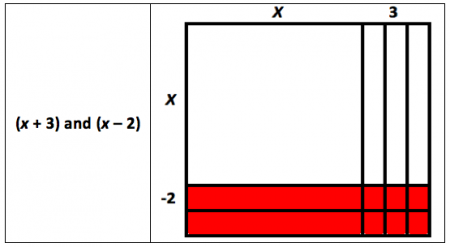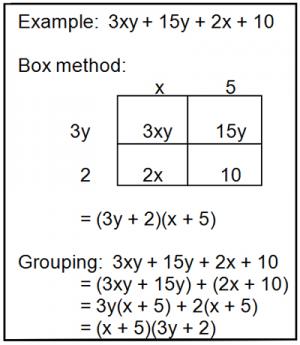TEKS Standards and Student Expectations
A(10) Number and algebraic methods. The student applies the mathematical process standards and algebraic methods to rewrite in equivalent forms and perform operations on polynomial expressions. The student is expected to:
A(10)(E) factor, if possible, trinomials with real factors in the form ax2 + bx + c including perfect square trinomials of degree two
A(10)(F) decide if a binomial can be written as the difference of two squares and if possible, use the structure of a difference of two squares to rewrite the binomial
A(10)(D) rewrite polynomial expressions of degree one and degree two in equivalent forms using the distributive property
A(8) Quadratic functions and equations. The student applies the mathematical process standards to solve, with and without technology, quadratic equations and evaluate the reasonableness of their solutions. The student formulates statistical relationships and evaluates their reasonableness based on real-world data. The student is expected to:
A(8)(A) solve quadratic equations having real solutions by factoring, taking square roots, completing the square, and applying the quadratic formula
Resource Objective(s)
The student will use a variety of methods to solve problems by factoring, including models, guess and check, grouping, and special cases.
Essential Questions
What is the process for factoring a trinomial with a leading coefficient of 1?
What is the process for factoring a trinomial when the leading coefficient is not 1?
How can you determine if the rules for difference of two squares, difference of two cubes, or perfect squares can be used to factor?
When does the grouping method for factoring apply?
Vocabulary
- Binomial
- Factor
- GCF (Greatest Common Factor)
- Leading Coefficient
- Trinomial
- Polynomial
- Quadratic Equation






